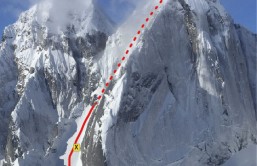SDO is in charge of constantly monitoring our sun and was able to capture an image of the flare. "Solar flares are powerful bursts of radiation," according to the press release. "Harmful radiation from a flare cannot pass through Earth's atmosphere to physically affect humans on the ground, however - when intense enough - they can disturb the atmosphere in the layer where GPS and communications signals travel."
The flare was classified as an X2.2-class flare. X-class is reserved for the most intense flares. The numbers refer to the strength of the flare. "An X2 is twice as intense as an X1, an X3 is three times as intense, etc.," the press release explained.
In this video from NASA/SDO, the flare was captured by extreme ultraviolet light. Solar debris is visible as the flare erupts:
NASA defines a solar flare as: "an intense burst of radiation coming from the release of magnetic energy associated with sunspots. Flares are our solar system's largest explosive events. They are seen as bright areas on the sun and they can last from minutes to hours. We typically see a solar flare by the photons (or light) it releases, at most every wavelength of the spectrum. The primary ways we monitor flares are in x-rays and optical light. Flares are also sites where particles (electrons, protons, and heavier particles) are accelerated."
NOAA's Space Weather Prediction Center is the U.S. government's official source for space weather forecasts, alerts, watches and warnings. On Wednesday, NOAA reported: "An R3 (Strong) Radio Blackout peaked at 1622 UTC (12:22pm EDT) today, March 11. This is yet another significant solar flare from Active Region 12297 as it marches across the solar disk. This is the largest flare the region has produced so far, after producing a slew of R1 (Minor) and R2 (Moderate) Radio Blackouts over the past few days."








